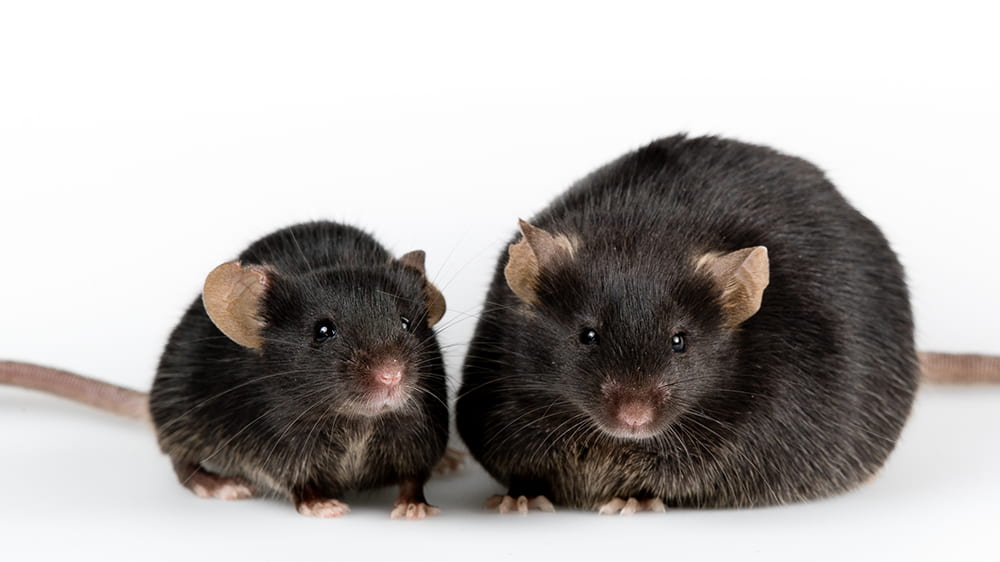
Jan 3, 2020 | Cancer, Immunology, Microbiome, News Roundup
A selection of health news from the University of Chicago and around the globe curated just for you.
Microbes living in the tons of plastics in the oceans
Jessica Mark Welch and colleagues at UChicago’s Marine Biological Laboratory at Woods Hole, MA, aim their new microscopy technique at microplastic samples from the ocean to characterize the extensive biofilms on ocean plastic. (Agro Ecology Innovations)
Staph vaccines likely to work better if administered earlier
Research by former UChicago faculty member Julian Bubeck-Wardenburg, now at Washington University in St. Louis, suggests that vaccinating infants before their first encounter staph, either just after birth or via their mothers during pregnancy, would likely generate a stronger immune response. (Futurity)
Microbial inequity
To the host of ways people experience inequity, add the microbiome: A University of Maine scientist argues that access to fibrous foods, parks, good air quality, other infrastructure affect the development of a healthy microbiome. (The Conversation)
UChicago faculty lauded yet again
Thomas Gajewski, MD, PhD, Abbvie Foundation Professor of Cancer Immunotherapy, is honored with the 2019 Award for Immuno-Oncology from the European Society for Medical Oncology (Healio)
Gut neurons are anti-salmonella warriors
Research from Harvard Medical School have found that nerves in the gut not only regulate the cellular gates that admit microorganisms, but actively boost the number of protective microbes there. (ScienceBlog)

Dec 19, 2019 | Biology, Genetics, Genomics
by Elise Wachspress
Before the Olympian deities worshipped by the ancient Greeks, there were their ancestors, the Titans. The stories about both sets of gods would put our own Game of Thrones to shame for their high drama, grisly battles, multiple plot twists, and huge, convoluted casts.
The Titan Atlas led the Titanomachy, the war challenging the upstarts, which was decisive. The next-gen Olympians won, and Atlas was forced to carry the weight of the heavens—the universe, to the Greeks—throughout eternity.
Many centuries later, geographer Gerardus Mercator envisioned an encyclopedic portfolio of documents that included not just a collection of maps but also descriptions of the creation and form of the entire universe, or at least what was known of it in the middle of the sixteenth century. Mercator called his creation an “atlas,” named for the Titan who carried the heavens on his shoulders.
Since then, people have commonly called a book of maps an “atlas.” But, like Mercator’s original compendium, the best atlas is one that shows not just where, but how, when, and why.
In October 2016, a group of world-leading scientists met in London to discuss creating an atlas of the cells in the human body—a tool that would help describe and define the cellular basis of health and disease. Like the Human Genome Project, the Human Cell Atlas (HCA) initially looked like an overwhelmingly difficult quest. The scientists wanted to identify each unique cell type, describe how they work together to form tissues in three dimensions, and understand how all the body systems were connected. They needed to know which genes were active in which parts of the body and how each different cell type was produced.
As with the Human Genome Project, the only possible approach was to enlist a huge coalition of experts in biology, medicine, genomics, data analysis, software engineering, and visualization. Like the cast of thousands employed by Game of Thrones, groups would follow their own individual plot lines, coming together as the project grew.
Also like Game of Thrones, budgets would be high. Luckily, major foundations, including The Leona M. and Harry B. Helmsley Charitable Trust, the Wellcome Trust, the Chan Zuckerberg Initiative, and many others stepped in generously to make the work possible and accelerate progress.
The project would have been impossible without scientific breakthroughs in “single-cell technologies.” Researchers needed the ability to isolate individual cells, increase the amount of DNA and RNA within each sufficient for sequencing, see which genes were expressed (i.e., made into proteins) in each, and watch how those proteins powered that particular cell. Looking at a group of cells would just show how cells operated on average, with little information about how each individual cell contributed to the creation of tissues, organs, systems, immunity—and the health of the human person over all.

Anindita “Oni” Basu, PhD
Needless to say, many of the leaders in the new field of single-cell technologies are young, and UChicago has one of its pioneers. Anindita “Oni” Basu and her lab are not only adept at isolating and studying single cells, but they can do so quickly for multiple cells isolated from their native environments. Basu has profiled thousands of cells at a time, and, with her joint appointment at Argonne Laboratory’s Center for Nanoscale Systems, is constantly developing new tools to study inter-cellular interactions in complex biological systems.
Thus it was no surprise when Basu received a grant of nearly $3 million from the Helmsley Charitable Trust for a collaboration with other groups to help develop a “Gut Cell Atlas.” The goal is to better understand Crohn’s disease, a serious inflammatory bowel disease that causes abdominal pain, severe diarrhea, fatigue, weight loss, and even malnutrition. Basu and her team will not only identify and characterize gut cell types in those with and without Crohn’s, but also create “organoids,” lab-grown models of gut tissue, to study the mechanisms of Crohn’s disease in the lab and identify actionable targets for therapeutic interventions and disease prevention. Like Mercator’s atlas, the Gut Cell Atlas will be much more than a mere collection of maps.
Helming a large team that includes Crohn’s disease specialist Gene Chang, MD, and statistical geneticist Matthew Stephens, PhD, and set in an environment with a NIH-funded Digestive Diseases Research Core Center and strong clinical leadership in inflammatory bowel diseases, Basu has the perfect environment collaborate on building the Gut Cell Atlas.
It’s a big universe on Basu’s shoulders. But the knowledge she, her team, and others will develop over the next three years can create a foundation for new drug development and diagnostic tools, critical in an episodic disease like Crohn’s, where catching a flare-up early can significantly reduce disease progression. If her team can demystify the unknown, chart territories now marked “Here Be Dragons,“ and ultimately win this war, there will be smoother sailing ahead for the estimated three million people in the US with Crohn’s disease.
Elise Wachspress is a senior communications strategist for the University of Chicago Medicine & Biological Sciences Development office

Dec 10, 2019 | Evolution, Immunology
by Paulette Krishack
Post-doctoral fellow in the University of Chicago’s Department of Medicine
Around 10,000 years ago, our ancestors began establishing the first permanent settlements. The dawn of agriculture provided a stable food supply, and those who had once hunted and gathered for sustenance could settle down to a more rooted lifestyle and greater investment in shelter, clothing, even political and artistic endeavors.
But every lifestyle has its challenges. The change to a more permanent settlement seems to have been accompanied by an increase in infectious diseases, like measles and plague, that only take hold when there is a critical mass of infected people. Anthropologists and others have theorized that farming made it easier for diseases to spread from soil, insects, and larger animals to humans, and that the larger, denser communities fostered through agriculture encouraged transmission between humans.
UChicago evolutionary biologist Luis Barreiro, PhD, Pennsylvania State anthropologist George H. Perry, PhD, McGill University geneticist and their team set out to test this idea. They wanted to determine if and how the immune system evolved in response to a move from a hunter/gatherer to an agricultural lifestyle. Perhaps they would show that agriculturalists’ immune system had adapted to the spread of infectious diseases via evolution, positively selecting genetic variants that helped them survive in the face of communicable diseases.
The researchers focused on two different Ugandan communities, the Batwa (hunter/gatherers) and the Bakiga (agriculturalists), located near each other but isolated for thousands of years. The research team collected and genotyped whole blood samples from each. They also incubated circulating white blood cells from individuals in both communities with viral and bacterial agents, to understand how immune responses differed between the two communities.
The team found that each community did have a unique immune profile and that natural selection has contributed to differences in immune responses between the two groups. Yet, their results do not support the long-standing hypothesis that pathogens exerted selective pressure on agriculturalist populations. Instead, Barreiro, Perry, and Harrison’s work, documented in Nature Ecology and Evolution, demonstrated that there were more selective differences in immune responses in the hunter-gatherer population. The study also suggest that differences in exposure to viruses might have been the primary driver of adaptive evolution in both populations.
While the authors offer the caveat that their sample size (just over 100 people) was small, they have provided the first genome-wide comparison of immune variation between hunter/gatherer and agricultural populations in Africa—an issue that seems important to understanding man’s relationship to both the environment and food production. By learning how we have adapted to our changing surroundings over time, we can better fine-tune our lives and systems to support greater health in the future.

Dec 5, 2019 | Cancer, Immunology, Microbiome
A selection of health news from the University of Chicago and around the globe curated just for you.
The community in your mouth
Marine Biological Laboratory and DFI researcher Jessica Mark Welch, PhD, shares her research into oral microbiome, and what we can learn about healthy and diseased states from microbes’ relationships and interactions. (Smithsonian Magazine)
Common drugs linked with microbiome alterations
Patients who used drugs from 18 common drug classifications—including proton pump inhibitors, metformin, antibiotics, laxatives, and others—showed extensive changes in their gut microbiomes. (MedPage Today)
DFI researcher Tatyana Golovkina, PhD, named AAAS fellow
UChicago professors Melina Hale, PhD, and Margaret Beale Spencer, PhD’76, were also honored by the American Association for the Advancement of the Sciences—the world’s largest general scientific society. (UChicago News)
Urine microbiome predicts cancer immunotherapy response
UChicago physician-scientist Randy Sweis, MD, demonstrated that the presence of certain strains of bacteria could tell us which bladder cancer patients would face recurrence after immunotherapy treatment. (Healio)
Diets high in fiber and yogurt cut lung cancer risk
By collecting data from several lung cancer studies involving more than 1.4 million adults from the US, Europe, and Asia, researchers showed that high-fiber, high-yogurt diets reduced lung cancer risk by one third. (Futurity)

Nov 15, 2019 | Immunology, Microbiome, Neuroscience
by Elise Wachspress
Celiac disease is a serious autoimmune disorder. When those with celiac eat gluten—a group of proteins found in cereal grains like wheat and barley—their immune systems respond by inflaming and damaging the little “fingers” of tissue that absorb food nutrients in the small intestine.
About one in every 100 Americans has celiac, but many don’t realize it. The disease can be hard to diagnose, because symptoms are so diffuse: anemia, osteoporosis, loss of dental enamel, heartburn, headaches, tingling hands, joint pain, a blistery skin rash, etc. Children may suffer vomiting, diarrhea, poor appetite, muscle wasting, and even failure to thrive; adolescents may be abnormally small for their age, with delayed puberty.
Among the hardest symptoms to pinpoint and link to celiac is what some patients call “brain fog.” Those with the disease often report episodes of headaches, depression, moodiness, difficulty concentrating, fumbling to choose words, and/or feeling tired even though they just got out of bed. Sometimes only when people are diagnosed with celiac, change to a gluten-free diet, and then find these symptoms disappear do they realize how celiac inflammation affected the clarity of their neural processing.
The problem is, total gluten elimination is hard to accomplish. While gluten-free foods and restaurants are becoming increasingly common, food is fundamental to most social relationships, and it’s hard to manage every interaction without seeming prickly or oversensitive.
And many “non-food” products use gluten as an edible “glue” to bind mixtures together, including some vitamins, medications, lipsticks and lip balms, even bouillon cubes. Then there are the products one might never suspect involve gluten, like pickles, hot cocoa mix (Celiac patients often make their own), and soy sauce (One can substitute the safer tamari).
So what happens when a patient with celiac has an inadvertent exposed to gluten? Or the pizza shows up in your child’s school and resistance is low? Some people find themselves living through several days when their brains just don’t seem to function. Work and school become a challenge, even for people who are normally bright and creative. People accidentally exposed to gluten report symptoms from irritability to anxiety to full-blown panic attacks.
Bana Jabri, MD, PhD, has long been interested in understanding the neurological distress that sometimes follows accidental gluten exposure. She wants to find out if immune factors called cytokines, released in response to gluten exposure, affect brain chemistry and the nerve centers feeding back to the gut. Understanding the relationship would provide a better understanding not only the neurological mechanisms involved in celiac disease, but also in other autoimmune conditions, like multiple sclerosis and rheumatoid arthritis, in which patients also report similarly diffuse cognitive impairment.
Jabri has established a collaboration with Jean Decety, PhD, a UChicago neuroscientist internationally recognized for his work in using fMRI (functional magnetic resonance imaging) to understand affective behavior. While a handful of case studies have used fMRI to study extremely serious neurological symptoms in individual patients with celiac disease, no one has yet undertaken a larger study of how celiac creates the “brain fog” that seems such a common complaint.
The plan is to have patients undergo fMRI, immunological, and other testing before and after a controlled gluten ingestion, to map the changes in all these factors. Jabri and Decety hope the results will help generate novel insights into the neurological impact of the disease and potential therapeutic avenues to prevent these negative outcomes.
Right now they are searching for funding to support these studies. But what they find may make life a lot easier for the three million Americans living with celiac disease, some living in fear that they may accidentally ingest something that will put them in a fog for days.
Elise Wachspress is a senior communications strategist for the University of Chicago Medicine & Biological Sciences Development office

Nov 5, 2019 | Cancer, Immunology
by Paulette Krishack
Post-doctoral fellow in the University of Chicago’s Department of Medicine
Breast cancer is one of the most commonly diagnosed cancers in women. Approximately one in eight will develop the disease in their lifetime, and over 40,000 in the U.S. will die from it this year. While genetics plays a role, 85 percent of women diagnosed with breast cancer have no family history, and effective prevention and treatment depends on identifying the other factors involved.
Clinicians break down breast cancers into at least five types, based on the molecular features present in the tumor cell. Several types are known to show hormone “receptors” (most commonly estrogen, progesterone, and a protein called HER-2) which offer targets for treatment.
But in one type, triple negative breast cancer (TNBC), tumor cells lack the hormone receptors and HER-2 protein known to fuel breast cancer. Finding a way to specifically target TNBC, a particularly aggressive form of cancer, is critical.
Obesity is known as a risk factor for breast cancer incidence and progression. Because obesity can cause chronic, systemic inflammation, Lev Becker, PhD, Marsha Rosner, PhD, and Payal Tiwari, PhD, were interested in finding out how the immune system might be involved in TNBC.
Becker has dedicated his laboratory and career to studying macrophages, the “big eaters” of the immune system, while Rosner specializes in cancer therapeutics. Although macrophages are powerful fighters of viruses and bacteria, they can also be called in to engulf the saturated fatty acids found in many high-fat foods, causing high-fat induced inflammation in the tissues they invade. Becker, Rosner, and Tiwari wanted to see if these obesity-associated macrophages were involved in TNBC.
Using a mouse model of TNBC, they found that the most common macrophages in the breast fat tissue of obese mice were a type specifically activated by a high-fat diet. These macrophages produced a pro-inflammatory protein, a cytokine called IL-6, which created a nurturing environment for TNBC tumors to grow. The team also found that switching the obese mice to a low-fat diet slowed tumor development. Studies also showed human tumor tissue with similar results: there were fewer macrophages present in tissues from lean patients than obese ones.
These studies suggest that immunotherapy—treatments targeting the immune response that is activated by macrophages—may offer innovative care for patients with TNBC, especially if they are obese. They may also offer potential strategies for treating other diseases linked to obesity, particularly those that involve macrophages, such as cardiovascular disease.
Most importantly, this research demonstrates the value of diet in maintaining health. A third of American adults are obese and another third overweight. Now that we know the toll a high-fat diet exerts on molecules in our body, we can embrace the mission of the Duchossois Family Institute: Use the knowledge we develop to improve our health and all those with whom we share the planet.

Oct 30, 2019 | Commercialization, Genetics, Microbiome
A selection of health news from the University of Chicago and around the globe curated just for you.
In the pancreas, common fungi may drive cancer
A new study found that certain fungi can settle in the pancreas, where the spur the growth of tumors. (New York Times and ScienceDaily)
Genetic differences in the immune system shape the microbiome
UChicago researchers showed that while the bacteria to which mice were exposed largely determined their resulting microbiome, genetic differences played a role as well. Drs. Chervonsky, Golovkina, Khan, and Antonopoulos featured. (The Forefront)
Polsky Center named the 2019 NASDAQ Center of Entrepreneurial Excellence
The award, presented at the annual Global Consortium of Entrepreneurship Centers, represents the highest honor that university entrepreneurship centers can receive. (Polsky Center)
PTSD nearly doubles risk for infections
The study found that PTSD affects infection risks for men and women differently, having, for example, more of an effect on a woman’s risk of urinary tract infection and a man’s risk of skin infection. (Futurity)
A new CRISPR technique could fix almost all genetic diseases
A less error-prone DNA editing method could correct many more harmful mutations than was previously possible. (WIRED)

Oct 16, 2019 | Microbiome
by Elise Wachspress
Relationships. Trust. Engagement. Leadership. A shared culture.
Often, a thriving community hinges on having a critical mass of members who reliably embody and stand up for these values. A core group that creates an environment where everyone—the weak, the hot-tempered, the shy, the energetic, the weirdos, and even the bombastic egotists—can all get along.
Yes, we are talking about your microbiome. And everyone else’s, for that matter.
Scientists who study the many dysfunctions of the human microbiome are entertaining the idea that gut—and systemic—health rely on a core group of bacteria whose “personalities” foster an environment where diversity can thrive long-term. These “universal colonizers” help smooth the inevitable challenges humans face: birth, development, sickness, even a wildly changing diet or variable climate. And that’s a good thing, because the human body has many different needs best served by a working balance of many different bacteria tunable to changing environmental conditions.
So maybe we should turn our attention from the inevitable “bad guys” who grab all the air time (Strep? Salmonella? Anthrax?) and try to figure out what kinds of bacteria can help the whole microbiome community work well together.
Thanks to research support from the Duchossois Family Institute, A. Murat Eren, known as Meren, is on the search for the foundational bacteria that set the stage for a balanced and happy gut flora. For this complex quest, he has pulled together a similarly diverse group of top citizens in microbiome science: Eugene Chang, MD, a specialist in inflammatory bowel disease; Bana Jabri, MD, PhD, expert in celiac; bioengineer and systems biologist Savas Tay, PhD; microbiologist Howard Shuman, PhD; evolutionary geneticist Luis Barriero, PhD; and epidemiologist Thomas Louie, MD, from the University of Calgary, a world expert in fecal microbiota transplant. (Yes, it is just what it sounds like.)
Identifying universal colonizers in an established gut community is challenging. How does one extract all bacteria living in one single gut environment and figure out which ones could thrive—and help others flourish—in any gut environment?
Meren’s first idea was to take a fecal transplant from one healthy donor, implant the microbiota in different recipients, and track how the bacterial populations change in different individuals. Initial analyses showed that while some of the bacteria colonized only one of their new hosts or none at all, some organisms were quite successful in multiple recipients.
These good colonizers also left their traces in individuals studied through the Human Microbiome Project (HMP), a National Institutes of Health initiative that collects microbiome samples from hundreds of healthy volunteers. But rather than zeroing in on all of the individual species in each sample—an all but impossible task with the available technology—the HMP painstakingly analyzes snippets of genetic code from whole communities of bacteria, generating tremendous amounts of data on the microbial mixtures in each of these volunteers.
This kind of communal sequencing, called metagenomics, has its limits. It’s like trying to recreate a recipe by analyzing all the chemical elements in a fully baked cake. It can work…sort of. With a great deal of user analysis and energy.
Following leads generated from metagenome studies, Meren’s team is working with some newer technologies, including a cutting-edge “long-read sequencing” approach which can look at much longer—and thus more uniquely identifiable—stretches of DNA. They also, thanks to Dr. Louie, now have access to a collection of potential colonizers much larger than their original “healthy patient #1.”
Even with the long-read sequencer, the work will depend on a lot of computational expertise. But Meren, whose group continues to hone anvi’o, an advanced, open-source analysis and visualization software that integrates many types of microbial data, has the team for the job. Meren’s leadership in creating anvi’o, a dynamic and unified work environment for data exploration, manipulation, and reporting, is empowering researchers with lesser bioinformatics skills to access and make use of many publicly available datasets, thus accelerating progress by the entire microbiome science community.
Now Meren and his team, especially graduate student Andrea Watson, senior research tech Karen Lolans, and post-doctoral scientist Florian Trigodet, PhD, are using their new long-read sequencing devices to zero in on some of the microbes who seem to have interesting stories to share. The aim is to identify the kind of microbial citizens who fosters a diverse gut community and thus helps their human hosts thrive.
Elise Wachspress is a senior communications strategist for the University of Chicago Medicine & Biological Sciences Development office

Oct 9, 2019 | Microbiome, Surgery
by Jordan Greer
Post-operative infections affect an estimated 300,000 patients each year and comprise as many as 11 percent of deaths among patients who end up in an intensive care unit. They are also the most common hospital acquired infection, and treatment costs range between $3.5 to $10 billion annually. Not surprisingly, efforts to reduce post-op infection and understand contributing factors are a major concern—for doctors and patients alike.
New research out of the University of Chicago Medicine’s Department of Surgery shows how the interplay between diet, antibiotics, and the microbiome may lead to fatal post-operative infection.
John Alverdy, MD, and Sanjiv Hyoju, MD, leaders of the study, used mice to explore this relationship. They fed one group of mice standard chow and gave a second group a “western,” high-fat, low-fiber diet which resulted in a near 35 percent increase in weight. Mice then underwent a partial liver resection, an otherwise fully recoverable surgical procedure. Prior to surgery, both groups received prophylactic antibiotics to prevent infection, mimicking common practice in patients.
However, survival outcomes diverged significantly between the two groups. Mice eating a high-fat, low-fiber western type diet suffered major infection-related complications following surgery. Seventy percent of the obese mice on the western diet died from bacteria-related infections—in stark contrast to mice fed standard chow, where only 10 percent suffered similar complications.
The results indicate that changes in the gut microbiome may in part be responsible. After 40 days on the “western” diet, mice showed a massive shift in the bacteria found within their guts. One kind of bacteria, called Bacteroides, were reduced to less than two percent of their former population in the mice’s guts. When the mice got both antibiotics and the western diet, the Bacteroides population was completely lost. Prior research had shown that Bacteroides can suppress harmful bacteria, and their elimination from the mouse gut could represent the loss of an important line of defense against infection.
In theory, antibiotics should be able to prevent infection even when Bacteroides aren’t present. Their job is to fight infectious bacteria, after all. But strangely, to add insult to injury, the antibiotics made some bacteria, especially one type of Serratia, more resistant to the antibiotics in the overweight mice. Though Serratia was found in both mice groups, only in the mice fed a Western diet did this strain develop antibiotic resistance and spread to internal organs, resulting in lethal sepsis. Most disturbingly, this deadly Serratia strain seemed to originate from the mouse’s own gut microbiome. And Serratia strains weren’t the only ones: other antibiotic-resistant bacteria were found in these mice as well.
This research illustrates a potentially troubling finding. As Dr. Alverdy noted, “We may have uncovered a lethal combination developing in some of our most at-risk surgical patients. The combination of a western diet and exposure to certain antibiotics appears to exert a direct—and negative—influence on the microbiome and may predispose certain patients to life-threatening postoperative infections.” Research like this provides greater understanding of the mechanisms of how diet and antibiotics shift the normal microbiome to resistance and suggests a more targeted approach, in which high-risk patients preoperatively rehabilitate their diets and are prescribed a more tailored regimen of antibiotics prior to surgery.
Results from Alverdy’s lab shed important light on other current findings: that organisms resistant to the antibiotics used for prophylaxis cause half of postoperative infections. These studies provide important clues to address this disturbing trend; they suggest we need to invest more attention to the role diet and the microbiome play in immune function and safer surgeries.
Better understanding of this relationship—through research efforts like those in the Duchossois Family Institute—will help medical professionals devise the best standards of surgical care for their patients and save more lives.
Jordan Greer is an Evolutionary Biology graduate student and science communication intern from the University of Chicago

Sep 27, 2019 | Food Allergies, Immunology, Microbiome, News Roundup, Research
A selection of health news from the University of Chicago and around the globe curated just for you.
Will these startups help biotech take root in Chicago?
Tom Gajewski is stepping into the spotlight with Pyxis Oncology, a cancer-therapy startup. He and co-founders John Flavin and David Steinberg raised $22 million to launch the spinout from his lab. (Crain’s Chicago Business)
Can gut bacteria heal food allergies?
How manipulating the microbiome could reverse and prevent peanut allergies and more. Cathryn Nagler featured. (Elemental by Medium)
Study finds an unexpected link between farming and immune system evolution
A new study by University of Chicago Medicine genetic researcher Luis Barreiro found the immune systems of hunter-gatherers showed more signs of positive natural selection, in particular among genes involved in the response to viruses. (phys.org)
Wash U team finds the ‘signature’ of guts that don’t get c. diff
Researchers have found the molecular signature of a healthy gut microbiome—the kind of bacterial community that keeps Clostridium difficilein check even in the aftermath of antibiotic treatment. (Futurity)
With new grants, Gates Foundation takes an early step toward a universal flu vaccine
Scientific teams from inside and outside the world of influenza research have been awarded funding to try to unlock mysteries that could provide the foundation for a future universal flu vaccine. Patrick Wilson featured. (STAT)
Human breast milk may help babies tell time via circadian signals from mom
The composition of breast milk changes across the day. Researchers believe this “chrononutrition” may help program infants’ emerging circadian biology. (The Conversation)
Just four nights with less sleep can alter fat storage
Restricting sleep for just four days alters how the body metabolizes fats and changes how satisfying meals seem, according to a new study with 15 healthy men. (Futurity)














